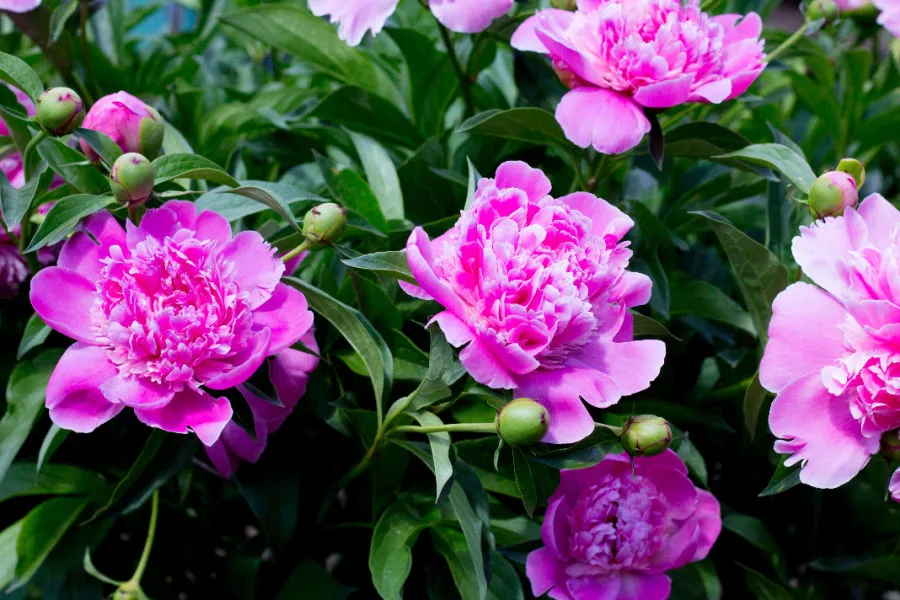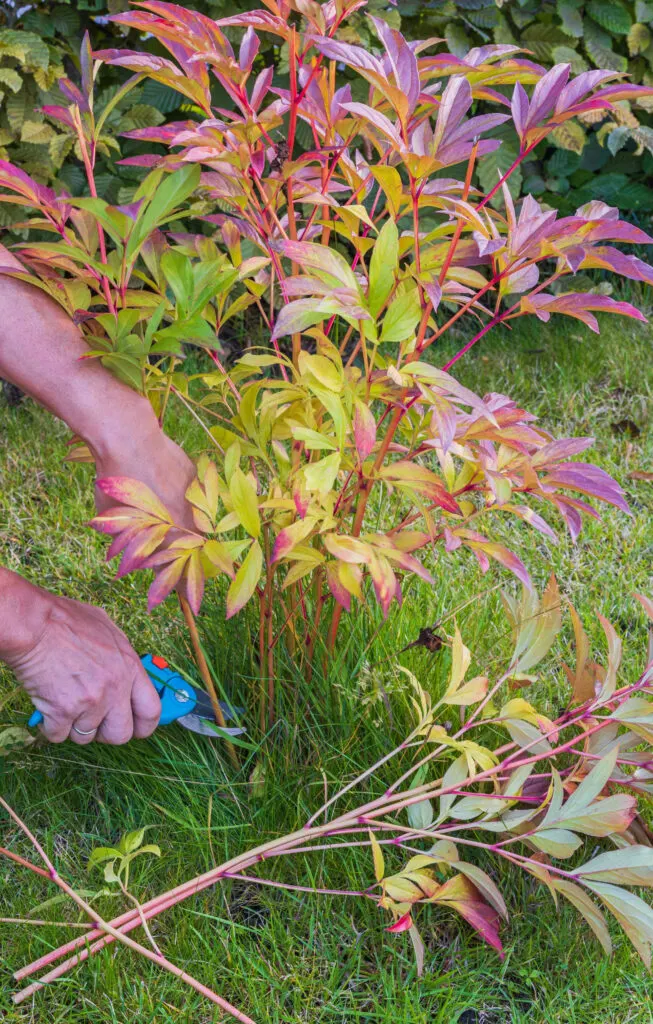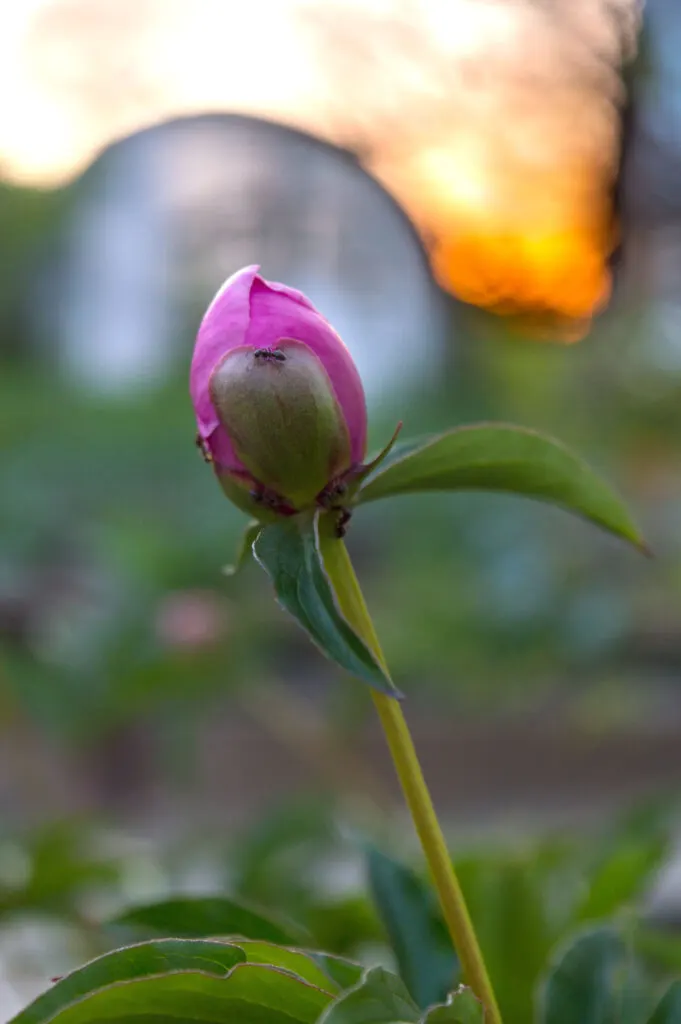Looking for a few tips, tricks and secrets to get your peonies to bloom big, bright and flower beautiful every single year?
Peony bushes produce some of the most intricate, colorful and showy flowers around. In fact, the massive blooms have been admired, sought after and prized for centuries by many cultures around the globe.
It’s easy to see why. Their flowers are not only beautiful, but wonderfully fragrant as well. Making them even more appealing, they can be found with blooms in a wide range of colors, from white and pink, to red, yellow, orange and nearly everything in between.

Once established, peony bushes are a relatively low-maintenance, easy-care perennial plant. They also happen to have quite the long lifespan. Many varieties can survive without issue for decades, with some varieties lasting as long as 50 to 60 years or more.
But as amazing as this flowering bush can be, it can often frustrate home gardeners when it comes to getting it to bloom as it should each and every year. The good news is that with just a few tips and tricks, if your peony bush is struggling to flower, the problem can usually be remedied with ease!
When Peonies Fail To Bloom Or Bloom Poorly
When peony bushes struggle to bloom or fail to bloom all together, the problem can usually be traced back to one (or more) of the following five main issues:
- Trying to grow the bush in too warm of a climate
- Improper planting location
- Improper planting depth
- Failing to cut back the bush in the fall
- Not providing fertilizer or fertilizing at the wrong time
Obviously, if you happen to live in an extremely warm area, there isn’t a whole lot you can do to remedy that specific issue. Although peonies can survive in growing zones 3 through 8, they prefer to grow in climates with more frigid winters.
The cold of winter helps peonies to create stronger and more bountiful buds for the following season. Peony bushes use the winter chilling period to gear up for spring blooms, storing energy in their root system below the soil.

Unfortunately, if winters are too warm, the roots struggle with the process, making it nearly impossible for them to flower. If you are fortunate enough to have cooler winters and your peonies are still not blooming, fixing the issue is as easy as making sure all of the four remaining requirements are met.
With that in mind, here is a look at how peonies should be planted, fertilized and properly cared for to get them blooming bigger than ever!
How To Get Peonies To Bloom Big
Planting For Success
Planting peony bushes in the right space and location is the first step to long-term success, and to making sure your plants will flower year in and year out. Peonies need sunlight, but when (as in what time of the day) they get that sunlight can be vital to better health and producing more blooms.
Peonies perform best when they receive light early in the day. When planting, the best location you can select is one that receives more morning sun than anything else. In total, make sure your peony bushes will get at least six to eight hours of total sunlight each day.
In addition to sunlight, keep your peonies away from other large trees, shrubs and bushes. Large plants with extensive root systems can drain the nutrients peonies need to flower out of the soil. Planting with a single tree or bush nearby, or along with other perennials and annuals will be fine, but keep them away from mass tree and shrubbery plantings.

When planting, also keep future growth in mind. Peonies bushes can grow large over time. In fact, mature bushes easily reach three to five feet in diameter. As you plant, allow plenty of space for future growing.
Planting and Growing Peony Bushes – How To Get Peonies To Bloom Big
How your peony is planted can play a big role when it comes to its blooming habits. If peony bushes are planted too deep, they simply won’t bloom. When the plant’s roots go too far below the soil, they can’t properly chill.
When planting or replanting, always start by amending the soil with a generous amount of compost. This will help loosen the soil. It also makes it easy for the roots to establish quickly. Next, set the plant in the hole making sure the top of the plant’s soil is at the same level as the top of the existing soil.
This will keep the roots (root ball) near the top as needed. As you plant, always be careful not to cut or sever any roots. Finish by mulching with a few inches of mulch extending out to the edge of the bush. Mulch is critical to keep soil temperatures regulated, and keep moisture in the soil.
It is actually better to plant or transplant peonies in the fall versus the spring. Planting in the fall will allow the bush time to establish in the soil before going dormant. But more importantly, it also allows the roots to chill and store up energy for the following year’s blooms.

Although spring-planted peonies can survive, the stress of the late spring and summer heat can be hard on the plant’s first blooming cycle. For this reason, most spring-planted peony bushes will take an extra year to flower compared to fall planted peonies.
Fertilizing – How To Get Peonies To Bloom Big
Providing timely energy to your peony bush will also play an important role in keeping it blooming. But the key word here is timely!
Peony bushes should be fertilized two times each year, first in early spring before they begin to grow from the ground, and a second time, just after their buds form and before they flower. When fertilizing, apply around the edges of the plant and not on the root stock as this can burn and injure roots and stems.
As for what fertilizer is best, select one that is more balanced and not higher on the nitrogen side. Too much nitrogen will cause peony bushes to grow big but produce little blooms. Look for N-P-K ratios in your fertilizer in the range of 5-10-10. See: Understanding N-P-K Ratios – How To Select The Best Fertilizer For Plants
Bulb fertilizers work well for peonies. Fertilizers designed to help plants bud and bloom are also good choices. Even a 10-10-10 N-P-K basic fertilizer will work well, but stay away from fertilizers that have any type of higher Nitrogen compilation compared to the Potassium and Phosphorous. Affiliate Product Link: Dr Earth Bud & Bloom Fertilizer
Fall Care
We have saved the most important secret for last! To keep blooms coming back in full force each spring, it is vital to cut back the foliage in the fall. Cutting back allows the peony bush to concentrate its energy into the following year’s blooms.

If you allow the foliage and stems to remain, the plant simply can’t and won’t generate power to create a big spring show of flowers. As the plant dies off in the fall, take a sharp, clean pair of pruners and cut the plant back all the way to the ground.
Fall is also the time to divide and split if you are looking to create more plants. When digging up, split apart the root ball into sections with at least three or four roots to each transplant. Simply replant with the roots in the top level of the soil. Again, be careful not to plant too deep as it will keep it from blooming.
One of the best features of a peony bush is that once established, it requires little care to continue flowering. It can take up to 3 years of growth to reach full blooming potential. Beyond that, there is no need for digging or dividing to keep it blooming. Here is to getting your peonies to bloom big this year!
Follow Our Facebook Page For Great Gardening Tips And Advice! This Is My Garden Facebook Page
This Is My Garden is a garden website created by gardeners, for gardeners. Jim and Mary Competti have been writing gardening, DIY and recipe articles and books and speaking for over 15 years from their 46 acre Ohio farm. They publish three articles every week, 52 weeks a year. Sign up today to follow via email, or follow along!
